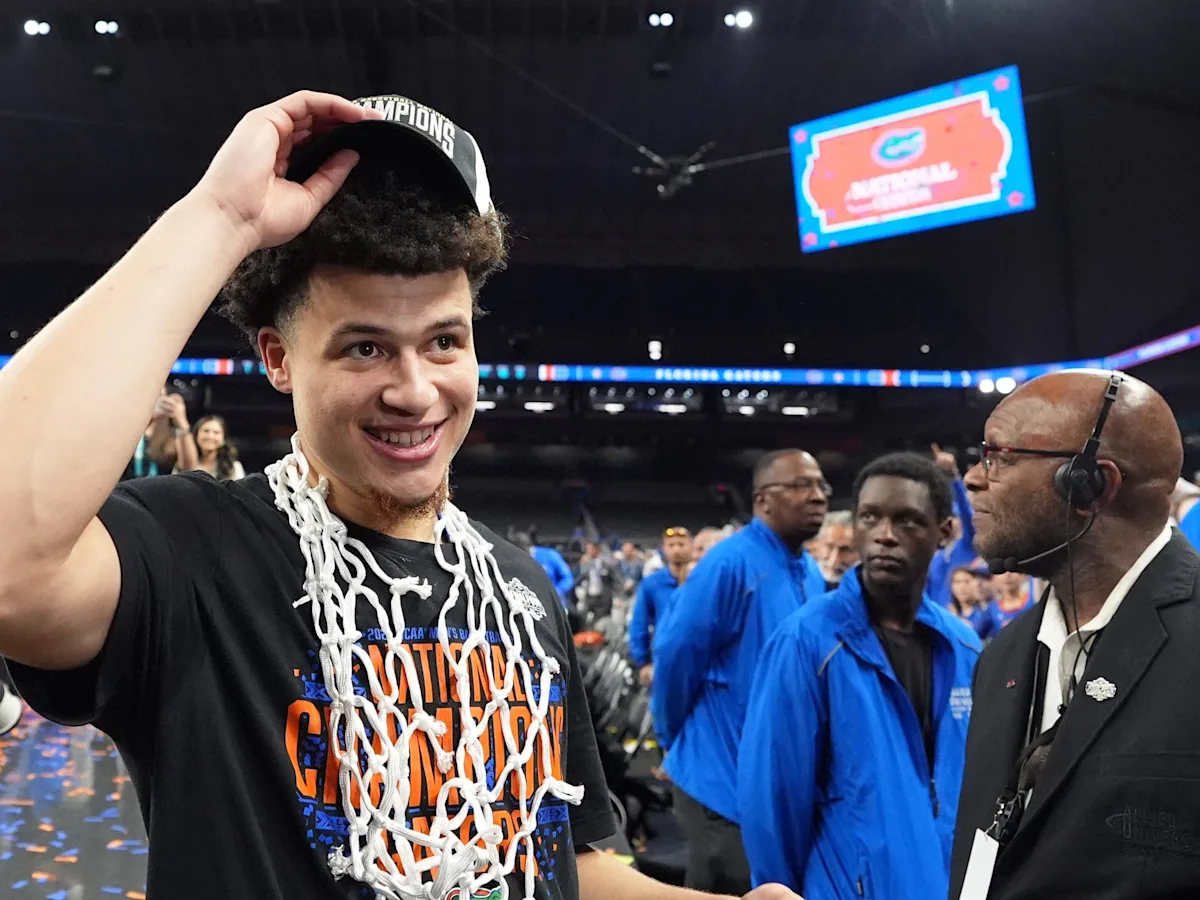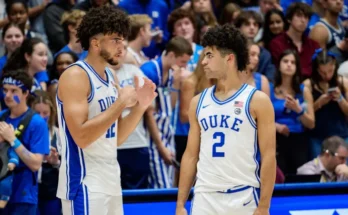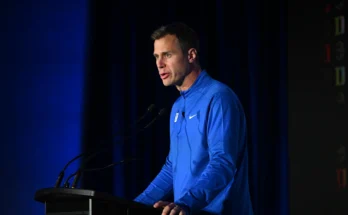How Walter Clayton Jr. Is Redefining the Role of Undersized Upperclassmen Guards and Changing the Game’s Narrative
In the evolving world of basketball, the archetype of the ideal player has always shifted with time. Height, size, and physical dominance were once considered paramount, especially in upperclassmen guards who were expected to lead their teams with a blend of maturity, physicality, and skill. However, Walter Clayton Jr. is emerging as a beacon of change, challenging conventional wisdom and redefining what it means to be an undersized upperclassman guard in the modern game. His journey, style of play, and impact on the court provide a fresh perspective on how players who might have been overlooked due to size can dominate through skill, basketball IQ, and relentless determination. Walter’s story is more than just about basketball; it’s about reshaping narratives and inspiring a new generation of players who don’t fit the traditional mold but have the heart and talent to lead at the highest levels.
Walter Clayton Jr. might not possess the towering stature of many of his contemporaries, but his influence on the court goes far beyond his physical measurements. In a sport where height often dictates attention and opportunity, Walter’s approach to the game is a reminder that size is just one piece of the puzzle. His success lies in an extraordinary combination of attributes: lightning-quick decision-making, impeccable ball-handling, a lethal scoring ability, and an uncanny ability to read defenses before they even set up. This skill set has allowed him to not only compete but thrive against bigger, more physically imposing opponents. By consistently outperforming expectations, Walter is forcing coaches, scouts, and fans to rethink the qualities they value most in upperclassmen guards.
One of the key factors that separates Walter Clayton Jr. from many of his peers is his maturity on the court. Upperclassmen guards are traditionally expected to serve as floor generals—players who command respect, manage the flow of the game, and make crucial decisions under pressure. Walter embodies these qualities despite any physical limitations. His leadership is subtle but powerful; he communicates through his play, setting the tempo and providing stability in high-stakes moments. His teammates look to him for guidance, and his calm demeanor during critical possessions often turns the tide of games. This leadership quality is invaluable and breaks the stereotype that only bigger, more physically dominant players can exert that kind of presence.
Beyond leadership, Walter’s work ethic and commitment to improving every facet of his game challenge the narrative around undersized players who sometimes face doubts about durability and endurance. Walter is known for his rigorous training routines and his willingness to embrace physical challenges rather than shy away from them. He understands that to compete with bigger guards, he must outthink and outwork them, developing a level of conditioning and strength that often surprises opponents. This determination to push physical boundaries serves as an example for other players who might feel limited by their stature. Walter’s journey sends a powerful message that limitations can be transcended through discipline and hard work.
What truly makes Walter’s impact revolutionary, however, is how he changes the style of play associated with upperclassmen guards. Traditionally, these players might have relied on physicality, toughness, and experience to dominate, but Walter introduces a new dimension of versatility and creativity. His offensive game is a blend of precision shooting, crafty drives to the basket, and an ability to create opportunities for teammates through clever passing. His style is not just about individual scoring but about elevating the entire team’s performance. This unselfish approach to leadership combined with his flair and creativity makes him a dynamic force that challenges old-school thinking. Coaches who once prioritized size and strength now see the value in a guard who can stretch defenses and keep opponents guessing with unpredictable moves and court vision.
Walter’s defense also illustrates his ability to transcend the limitations often assigned to undersized players. Defense in basketball is traditionally about using size and strength to contain opponents, but Walter approaches it with a different mindset. His quick feet, anticipation, and intelligence allow him to disrupt plays, create turnovers, and apply pressure without relying on brute force. This defensive acumen is crucial in high-level play, where a well-timed steal or a strategic positioning can shift momentum instantly. Walter’s defensive prowess challenges the notion that undersized guards are liabilities on that end of the floor, instead showing how they can be game-changers through skillful, intelligent play.
The broader implications of Walter Clayton Jr.’s success ripple beyond his own team or league. For years, basketball culture has often favored a narrow definition of what an upperclassmen guard should look and play like—usually taller, stronger players who fit a particular mold. Walter’s rise challenges these preconceived notions and opens doors for a wider range of players who bring different strengths to the table. His impact helps create a more inclusive understanding of basketball talent, one that values mental acuity, creativity, and perseverance as much as physical stature. This paradigm shift is critical for the sport’s continued growth and evolution, as it encourages coaches and scouts to develop more comprehensive evaluation methods that consider diverse skill sets.
Walter’s influence also resonates strongly with younger players and aspiring basketball athletes who might feel discouraged by their physical attributes. Seeing someone like Walter excel sends a powerful message: success is not reserved for those with ideal height or size but is attainable through dedication, skill development, and mental toughness. This can inspire young players to work harder, refine their games, and believe in their potential despite external judgments. The narrative around undersized players—especially those in upperclassmen leadership roles—is transforming from one of skepticism to one of possibility, and Walter Clayton Jr. is at the heart of that transformation.
Furthermore, Walter’s story provides valuable lessons about adaptability in basketball. The modern game increasingly rewards players who can switch roles, think quickly, and innovate on the fly. Walter’s ability to play multiple positions, adjust his style to different opponents, and embrace new challenges exemplifies the kind of versatility that teams crave. His example encourages players to develop all-around games rather than fitting into narrow roles defined by traditional expectations. This versatility also contributes to his longevity and relevance as an upperclassman, proving that adaptability is as crucial as raw physical gifts in maintaining success over time.
In addition to his impact on the court, Walter Clayton Jr. serves as a cultural figure who challenges societal norms about physicality and leadership. Sports often mirror broader social attitudes about what success looks like, and Walter’s emergence helps shift those views by showcasing the power of intellect, creativity, and resilience. His presence encourages conversations about the value of diverse skill sets and the importance of recognizing talent in all forms. This cultural shift has the potential to influence not only basketball but other sports and fields where physical attributes have traditionally overshadowed other qualities.
Walter’s journey is also a testament to the importance of support systems and environments that nurture unconventional talent. Coaches, trainers, and teammates who recognize and cultivate Walter’s unique strengths have played a vital role in his development. This underscores the need for basketball programs to be open-minded and flexible in their approach, fostering environments where players of all sizes and styles can thrive. Walter’s success story highlights how tailored coaching and belief in the player can unlock extraordinary potential, challenging the one-size-fits-all mentality that has often limited opportunities for undersized athletes.
Moreover, Walter Clayton Jr.’s example is an important reminder of the mental game in basketball. The psychological aspects—confidence, resilience, focus—are often what separate good players from great ones. Walter’s ability to maintain composure in pressure situations, bounce back from setbacks, and continually push his limits speaks to his mental fortitude. This strength of mind not only improves his own performance but also inspires his teammates and creates a culture of perseverance. In this way, Walter changes the narrative not just about physical size but about what it truly means to be an upperclassman guard leading a team.
Walter Clayton Jr. is not simply an outlier who defies the odds; he is a harbinger of a new era in basketball. His success challenges outdated stereotypes and broadens the understanding of what an undersized upperclassmen guard can accomplish. Through his leadership, skill, and mental toughness, Walter demonstrates that size is not destiny. Instead, it is a combination of heart, intelligence, and relentless effort that defines greatness. His influence is helping reshape the narrative, creating space for more players like him to thrive and proving that the future of basketball is as much about mind and skill as it is about size.
In conclusion, Walter Clayton Jr.’s impact extends far beyond the stat sheets and highlight reels. He is changing the way we think about upperclassmen guards, proving that an undersized player can not only survive but dominate in a role traditionally reserved for bigger athletes. His journey is a powerful reminder that basketball is a game of innovation, adaptability, and resilience. Walter is not just rewriting the narrative for himself but for every undersized player striving to make their mark. As basketball continues to evolve, players like Walter Clayton Jr. will lead the charge, inspiring a new generation to believe that greatness comes in all shapes and sizes.



